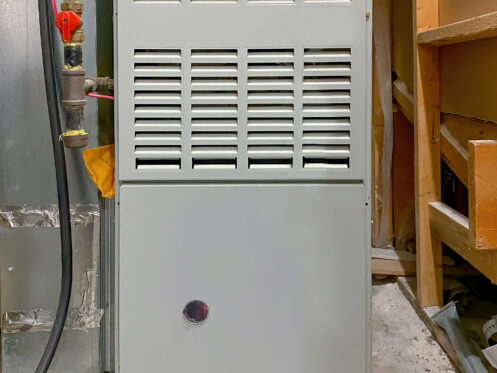If there’s one thing that every Huntington, WV, homeowner is looking for, it’s a reliable heating system that doesn’t cost a fortune to operate. The good news is that two options fit the bill perfectly. One is a high-efficiency gas furnace, which is a higher-tech version of the nation’s most common heating system. The other is a heat pump, which offers heating efficiency that no other system type can match. However, both work quite differently from the other, and each relies on some interesting scientific principles to work. Here’s the science behind two of today’s most efficient heating system types.
How High-Efficiency Furnaces Work
For years, most gas furnaces operated at approximately 80% efficiency. Mechanically, they were quite simple. They relied on an open combustion process, a heat exchanger, and a blower fan. To burn natural gas, such furnaces drew in air from the space around the furnace and used a pilot light or electric ignition system to light their burners. As that happened, a blower fan would push indoor air across a heat exchanger situated above the burners. As a result, about 80% of the combustion heat made it into the air, and the rest left the home via a metal flue as hot condensate.
High-efficiency furnaces operate similarly but contain a few extra components that capture more of the heat produced. For one thing, they rely on a closed combustion process that draws in outside air through a pipe. For another, they have a secondary heat exchanger that turns the hot condensate into water while capturing additional heat. That wastewater then gets carried away by a condensate line. As a result of this process, the exhaust from a high-efficiency gas furnace leaves your home at about 120 degrees Fahrenheit, as opposed to the 350-degree exhaust that comes from a standard furnace.
The Science Behind High-Efficiency Furnaces
There’s an interesting bit of science behind the operations of a high-efficiency gas furnace. It involves the way that a high-efficiency furnace’s heat exchanger works to extract additional heat from the furnace’s exhaust. To understand the process, you need only look at a tea kettle.
To boil water, it takes about 970 BTUs of heat for every pound of water. When you apply that heat, the water increases in temperature to about 212 degrees Fahrenheit before undergoing a phase change and turning into steam. The energy it takes to force that phase change is called latent heat.
When a high-efficiency furnace runs, it creates steam by boiling the moisture in the air. In a conventional furnace, that hot steam leaves the home, and the energy used to produce it leaves with it. In a high-efficiency furnace, the exhaust travels through a second heat exchanger that allows the steam to condense back into a liquid. In the process, it extracts the latent heat and transfers it to your home’s air. As a result, a high-efficiency furnace will run at an efficiency between 90% and 98.5%, depending on the model.
How Heat Pumps Work
A heat pump, by comparison, doesn’t use combustion at all. Instead, it relies on the refrigeration cycle to capture existing heat from the outside air. It then amplifies that heat and carries it into your home to warm it up. To do it, a heat pump uses nothing but a few fans, two heat exchangers, a compressor, and some refrigerant. As you may have guessed, they rely on some even more clever science than high-efficiency furnaces do.
The Science Behind Heat Pumps
Two main scientific principles allow heat pumps to work the way they do. The first one is a part of the second law of thermodynamics. It states, in part, that heat energy will always spontaneously flow from hotter substances to colder ones. Heat pumps take advantage of this, using a refrigerant to move heat from one place to another.
The other scientific principle heat pumps rely on is the relationship between pressure and temperature in both gasses and liquids. Generally speaking, raising the pressure of a liquid or gas will raise its temperature, and lowering it will make it colder. Plus, pressure also affects the boiling point of liquids.
A heat pump uses that principle by adjusting the pressure on its refrigerant, which makes it cold and lowers its boiling point. The cold refrigerant travels through an outdoor heat exchanger while a fan blows outdoor air across it. Since the refrigerant is colder than the air, it absorbs heat energy and boils. Then, the heat pump uses a compressor to raise the pressure of the warm refrigerant vapor, making it hot enough to heat your home. Best of all, since the heat already exists in the outside air, heat pumps can operate at up to an astounding 400% efficiency in the right conditions.
Your Efficient Heating Specialists
If you want a high-efficiency furnace or heat pump for your Huntington home, Variable Comfort Solutions can help. We offer complete HVAC installation, repair, and maintenance services. Plus, we also handle commercial HVAC systems and offer indoor air quality solutions. Plus, we’re a family-owned local business with a team of trained and experienced HVAC technicians. So, if you need an efficient heating solution for your Huntington home, call our team at Variable Comfort Solutions today.


